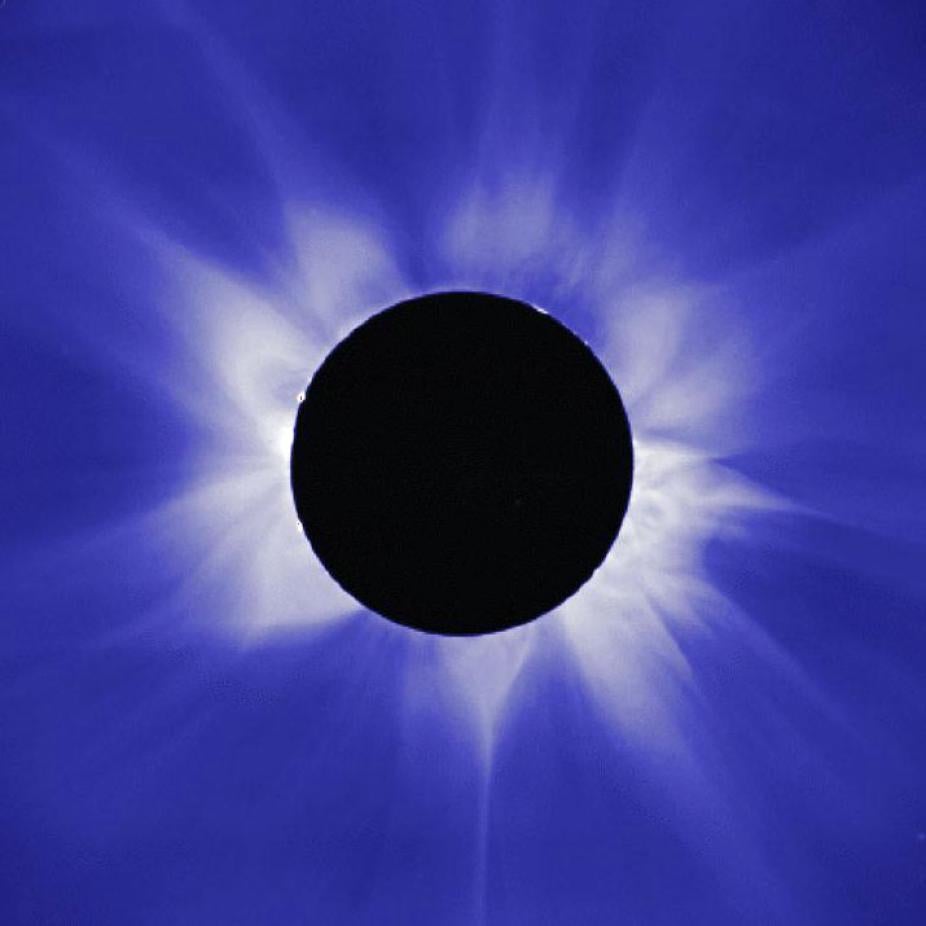Total Solar Eclipse of 1980
This solar eclipse was photographed in India on February 16, 1980.

February 16, 1980: White light image.
Solar eclipses occur when the moon, orbiting the earth, crosses the (imaginary) line joining the Sun and Earth, so that the Earth lies directly in the shadow of the Moon. With the solar disk completely obscured, the solar corona becomes visible. It is indeed remarkable that the angular sizes of the Moon and the Sun, as seen from the Earth, are so similar; had the Moon been a few percent smaller or orbiting a little farther away from the Earth, eclipses would not provide such spectacular views of the corona. The corona extends outward many solar radii above the solar surface, and owes its appearance to sunlight scattered by hot (1–2 million degrees Kelvin), tenuous ionized gas streaming away from the Sun. The resulting outflow is known as the solar wind. The solar wind flows all the way past the Earth and the outer planets, and terminates in the interstellar medium well outside the confines of the solar system. The process through which ~6000 K gas streaming upward from the solar photosphere can be heated to temperatures in excess of 106 degrees Kelvin in the corona is believed to involve the solar magnetic field, although its mode of operation is not yet fully understood.
The most common coronal structures seen on eclipse photographs are the helmet streamers, bright elongated structures fairly wide near the solar limb but tapering off to a long, narrow spike farther away from the solar surface. Many streamers are visible all around the solar limb on this eclipse photograph; a particularly well-defined one can be seen over the south solar pole (down on the photograph). The base of helmet streamers often contain a darker cavity, in which bright prominences can sometimes be seen. Examples of such cavities with embedded prominences can be found on this photograph (upper left), as well as on the following slide.
Written By P. Charbonneau and O.R. White–April 18, 1995